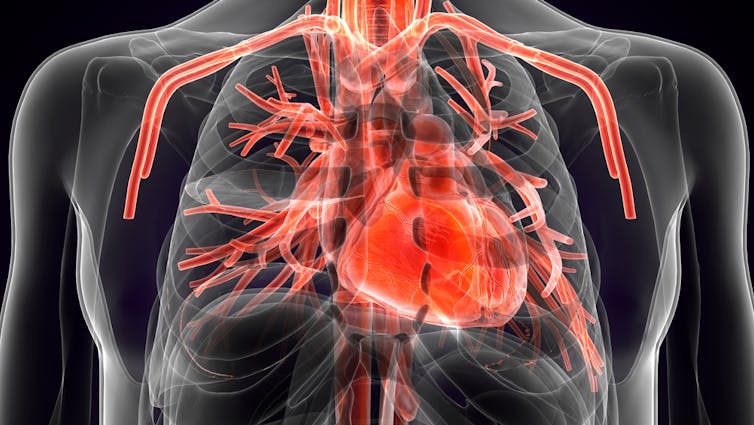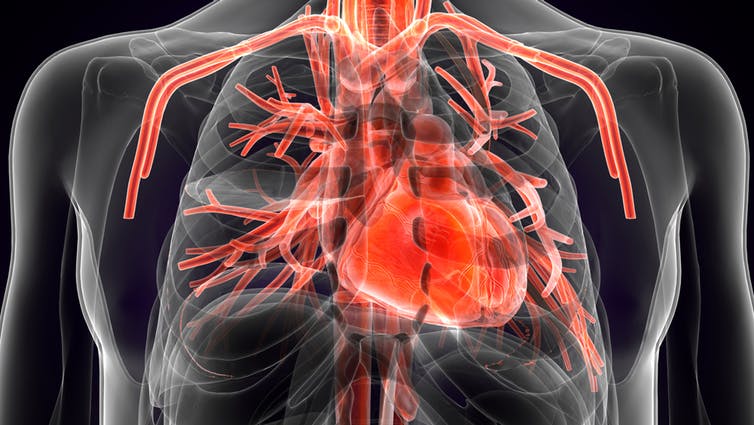
Dick Thijssen, Liverpool John Moores University
There is plenty of evidence that being physically active can reduce your risk of heart disease and stroke, but when do the benefits of exercise start to pay off? You might think that it’s after a few weeks – or even months – once you’ve lost some weight and your cholesterol levels have come down. But our latest review provides strong evidence that a single workout protects your heart immediately.
It is commonly thought, even among healthcare professionals, that exercise prevents cardiovascular disease by reducing risk factors such as excess body weight, cholesterol levels, insulin levels and fat mass. But it can take weeks or even months for these risk factors to be affected by exercise and, even then, the effects are often modest. However, our review summarised studies that found that just one bout of exercise may protect the heart.
Researchers have studied animals, such as mice and rats, to see if exercise can reduce the size of a heart attack. For our review, we looked at studies where scientists had induced a heart attack in rodents by blocking one artery in the heart and then examined the size of the heart attack. In other words, they examined how much tissue died.
The researchers performed this test in animals that had just exercised and compared them with animals that did not exercise at all. All of the studies that we included in our review showed that a single bout of exercise is associated with a smaller heart attack – and the ability of exercise to reduce the size of a heart attack remains for several days.
For obvious reasons, these experiments can’t be performed in humans, so studies in humans depend on other models.
It is believed that exercise releases a blood-borne substance that is responsible for the smaller heart attack after exercise. In one innovative study, included in our review, blood was taken from humans after exercise and after a period of rest. The blood was then circulated through the blood vessels of live rabbits’ hearts. Subsequently, an artery of the rabbits’ hearts was blocked, mimicking a heart attack.
The group of rabbits that had the human blood taken after exercise had a smaller heart attack than the group of rabbits that had human blood after a period of rest. So, as with the rodents, this work showed that a single bout of exercise can reduce the size of a heart attack.
These remarkable benefits occur in the absence of changes in cardiovascular risk factors (such as blood pressure, cholesterol and body weight) or adaptive responses (improved heart function). When you regularly perform exercise, it seems that the immediate protection is constantly present. Unfortunately, but also somewhat expected, the immediate benefits of exercise last for four to five days.
Most of the studies examining the immediate effects of exercise used moderate to high intensity endurance exercise of about one hour. We don’t know whether other types of exercise, or other durations, would provide different degrees of benefit. This area is ripe for further research.

El Nariz/Shutterstock.com
Prehabilitation
Rehabilitation is a type of exercise that is often used to improve fitness levels after an operation. But exercise can also be applied before an operation, so-called prehabilitation. A few sessions of planned, structured and supervised exercise for the days before heart surgery may provide significant benefits. This type of prehabilition might reduce mortality rates and contribute to a faster recovery – assuming, of course, that patients are able to exercise.
![]() Our work provides new evidence on the potency of exercise as a heart protector, both in the short and the long term. Just don’t go for more than four or five days without exercising. Use it or lose it.
Our work provides new evidence on the potency of exercise as a heart protector, both in the short and the long term. Just don’t go for more than four or five days without exercising. Use it or lose it.
Dick Thijssen, Professor in Cardiovascular Physiology and Exercise, Liverpool John Moores University
This article was originally published on The Conversation. Read the original article.




